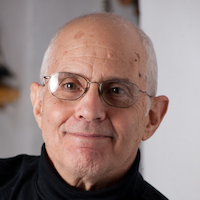Groundbreaking Exhibit on the Art and History of Yoga.
You have less than two weeks to get to Washington, D.C., to view the magnificent exhibit, “Yoga: The Art of Transformation.”
Mounted at the Smithsonian Institution’s Sackler Gallery, the show’s stated purpose is to “illuminate yoga’s central tenets as well as its obscured histories.” It does this mainly with more than 120 masterpieces of Indian art—sculptures, paintings, illustrated manuscripts, photographs, and more—ranging over nearly two millennia and borrowed from 25 collections in three continents. There are also modern Western sources, like a Look magazine cover and a Thomas Edison film titled Hindoo Fakir.
Confession: I haven’t yet seen the exhibit. Ironically, for much of the show’s run, I was in India speaking on the impact of yoga and related teachings on the U.S. Therefore, technically, this is not a review. But it is a recommendation.
Having chronicled the history of the yogic transmission from East to West in American Veda; having been a practitioner for more than 45 years; having talked to visitors to the show; and having viewed the works of art online (a poor facsimile, I know, but good enough to blow my mind), I feel confident encouraging people to go see it, especially yoga practitioners, aficionados of Indian culture, students of Asia’s spiritual and philosophical traditions, and just plain art lovers.
On esthetic grounds alone, the exhibit no doubt satisfies. I can’t wait to see, in person, works such as “Yogini,” a thousand-year-old, life-size sculpture of a voluptuous goddess figure, and an 18th century painting of the awe-inspiring cosmic vision granted to Arjuna in the Bhagavad Gita, and the 17th century illustrations from the first known compilation of yoga postures (asanas) that are now so familiar to Americans that the very word “yoga” is becoming virtually synonymous with them.
Which brings us to why the exhibit is important. When expertly curated, museums offer illumination as well as pleasure, and judging from the Smithsonian’s written material and the reviews I’ve read, this exhibit succeeds in educating visitors about the rich history of yoga and its deep, transcendent aims. In that sense, the exhibit is a corrective to the mixed blessing of yoga’s current popularity. If yoga were only a set of physical exercises, as the popular imagery would suggest, the exhibit would resemble the cover of a fitness magazine or an ad for arthritis medication, with slim women (and an occasional man), admirably but non-strenuously bent and stretched into classic poses, their faces peaceful and unbothered, suggesting that they’d rather be on their yoga mat than anyplace else on earth.
But the show’s organizers know that yoga is multifaceted and multicultural, and that its true purpose, as the exhibit’s title indicates, is to transform our lives for the better. Hence, we have images of meditating mendicants, enlightened sages, fierce warriors, tantric deities, philosophical manuscripts, and religious iconography not only from Hinduism but the other traditions that absorbed yogic methods, such as Buddhism, Sufism and Jainism.
I already knew a great deal about the philosophy and history of yoga, and yet I came upon some eye-opening information just reading about this exhibit (who knew there were female yogis who doubled as spies!). This is not surprising. As the exhibit’s curator, Debra Diamond, says, “I find that I know less about yoga now then I knew last year or five years ago. The more I study it, the bigger and deeper it gets. I respect yoga precisely because it keeps expanding the more that I try to grasp it.”
Through a variety of means, Americans have been absorbing ideas and practices from India for over 200 years now, and that process has had a more profound impact than most of us realize. Yet there is still a great deal more to learn, and in “Yoga: The Art of Transformation” we have yet another means of transmission.
If you can get to Washington before the show closes on Jan. 26th, you will not be sorry. And if, like me, you live far away and may not make it to the east coast in time, cheer up. You’ll be able to see it at San Francisco’s Asian Art Museum (Feb. 21-May 25), or at the Cleveland Museum of Art (June 22-Sept. 7). That gives you plenty of time to bend your schedule and stretch your priorities to accommodate this consciousness expanding exhibit.
Love elephant and want to go steady?
Sign up for our (curated) daily and weekly newsletters!
Editor: Rachel Nussbaum
Photo: elephant archives






Read 0 comments and reply